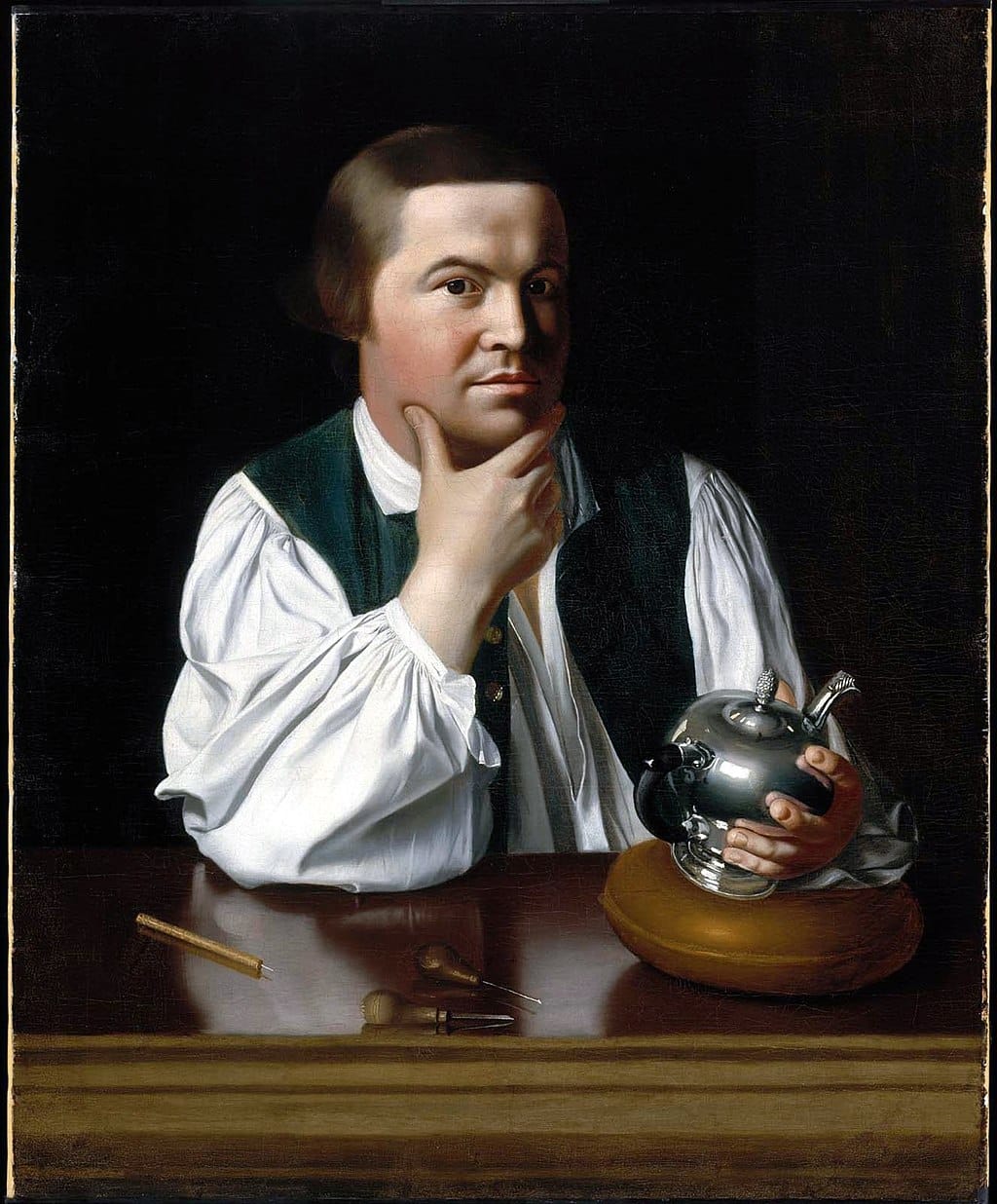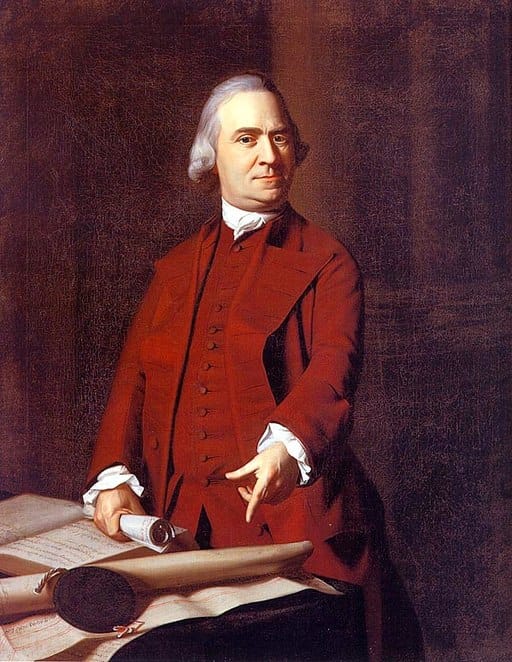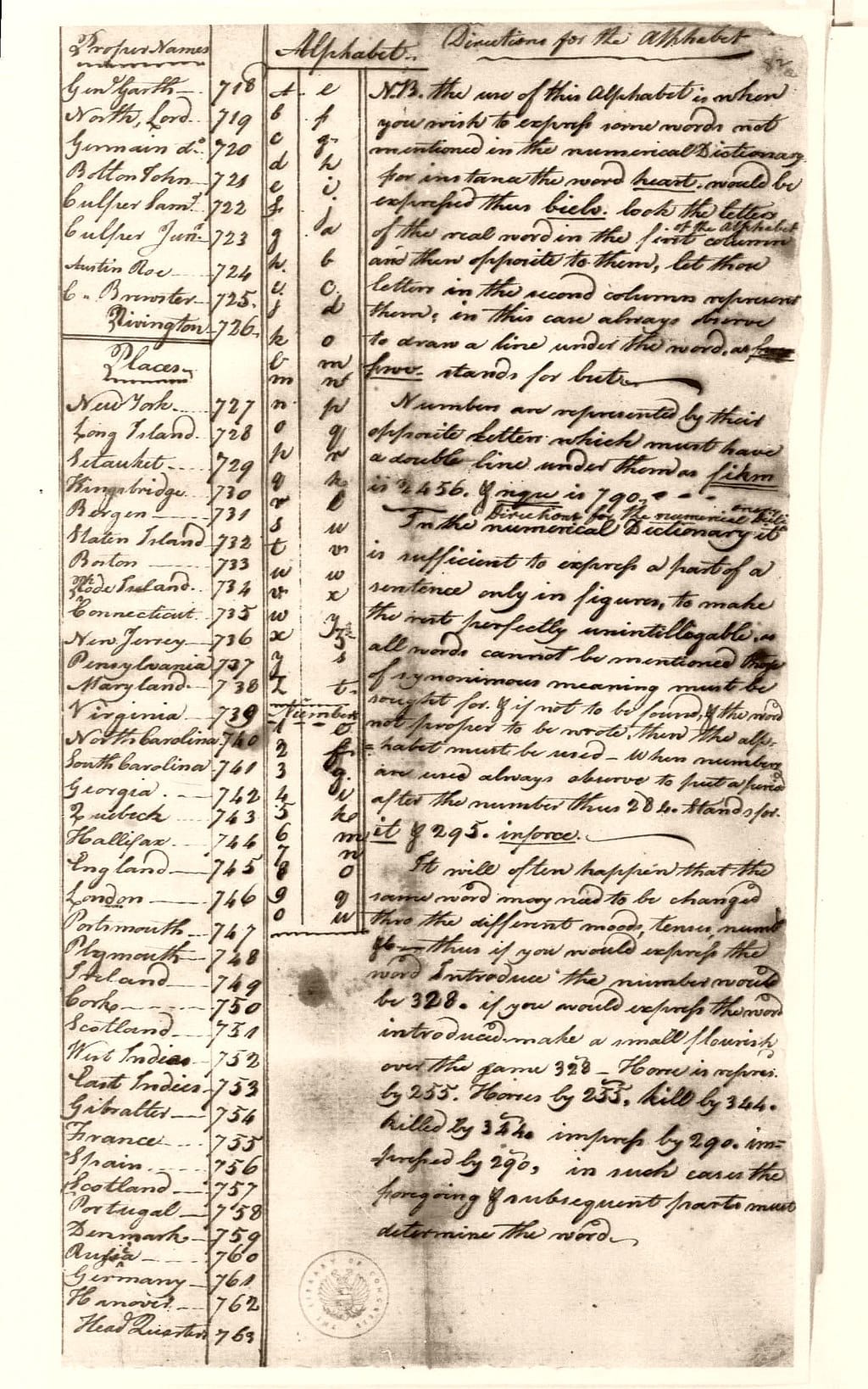Who was Paul Revere?
Paul Revere was far more than a name in history books. Paul was the pulse of a revolution. Paul was born on December 21, 1734 in Boston’s North End and Revere inherited the silversmith trade from his father, Apollos Rivoire was a French Huguenot immigrant, but Revere’s legacy was not forged in silver alone because it was shaped in fire and rebellion.

Image via Wikimedia Commons. Public domain in the United States and countries where copyright lasts for the life of the author plus 100 years or fewer. Original file.
Paul Revere what did he do?
As tensions with Britain grew, colonists grew weary of unfair taxation. Especially the Tea Act. When Parliament gave the British East India Company a monopoly, colonists saw it as a symbol of tyranny. So, On December 16, 1773, Paul Revere and fellow patriots dumped 342 chests of tea into Boston Harbor. Not just as an act of protest but a cry for liberty.
Paul’s courage did not stop there. He became a trusted messenger, riding through the night to warn of British troops and later founded the Revere Copper Company. This strengthened the young nation’s navy.
What did the colonists hope to achieve? It’s Freedom from oppression, fair representation and a voice in their own future. Paul Revere did not just ride into history but he helped carve the path to independence.
Why is Paul Revere Famous?
Paul is often remembered for his legendary midnight ride but his role in sparking American resistance runs deeper. On the night of April 18 1775 Paul set out from Boston on a mission from Dr. Joseph Warren. What was his task? It was – Warn Samuel Adams and John Hancock in Lexington that British troops were marching, likely to seize weapons and arrest revolutionaries.
Though popular legend claims he shouted “The British are coming!” – historians say that he probably did not. Still Revere’s ride through towns like Medford and Concord became a rallying cry for colonial defiance.
So how does this tie into the Boston Tea Party?
Paul was part of a growing movement of colonists who felt unheard and unfairly taxed and by dumping tea into Boston Harbor they were not just wasting British goods but they were making a bold statement – “We will not be ruled without representation.” The Midnight Ride and the Tea Party were both sparks in the fire of revolution.
Paul’s legacy reminds us that true change begins with bold action and a warning cry that night.
A Life Beyond the Ride
When most people hear the name Paul Revere they think of one thing and that is his legendary midnight ride. But they don’t know that Paul’s legacy goes far beyond that single night. In fact Paul was one of colonial America’s most skilled silversmiths, crafting intricate silverware that still survives today. Even Paul’s Boston shop was not just a place of business but it was a center for political thought and resistance–Buzzing with revolutionary ideas.
Paul was deeply involved in the movement that led to the Boston Tea Party. Like many colonists he believed British taxes, especially on tea, were unjust without colonial representation. The act of dumping tea into Boston Harbor was not just a rebellion but it was a bold demand for self-governance.
Paul later served as a military officer in the Revolutionary War and he became a staunch Federalist pushing for a strong national government. As America evolved, so did Revere. Paul founded Revere Copper and Brass, helping to supply the U.S. Navy and fueling early American industry.
Paul was not just a messenger on horseback but he was a craftsman, soldier, industrialist and a symbol of American determination to build a nation free from tyranny.
Paul Revere Important Facts
Silversmithing Mastery
- One of colonial America’s most talented silversmiths.
- Crafted finely detailed silver pieces, many of which survive today.
- His shop was a hub of political discussion and resistance.
Military and Political Involvement
- Served as a military officer during the Revolutionary War.
- Later became a notable Federalist, supporting a strong central government.
Pioneering Industrialist
- Founded Revere Copper & Brass, an early American manufacturing success.
- Supplied the U.S. Navy with copper sheeting for ship hulls.
- Helped transition America from artisan trades to industrial power.
Paul Revere Personal Life and Family
When we think of Paul Revere, often a picture comes to mind and that is his legendary midnight ride. But did you know that there’s more to the man than that famous moment? Paul was also connected to one of the most daring acts of rebellion in American history and that is the Boston Tea Party. Like many colonists he was driven by frustration. Britain’s Tea Act was not just about money, it was about control. Colonists did not want to be taxed without a say. By dumping tea into Boston Harbor they sent a loud message to the British and that is freedom matters more than profit.
But the thing is, who was Paul off the battlefield? Born to Apollos Rivoire and Deborah Hichborn, Revere was a skilled silversmith, a father of 16 children, and married twice. First to Sarah Orne and then Rachel Walker, among his children were Deborah, Joseph Warren, and John Revere. Paul’s family ties were deep and his legacy extended to over 50 grandchildren.
Revere’s life reminds us that the American Revolution was not just about protests: it was about people, families, and the hope for a future shaped by liberty.
Family at a Glance:
- Spouses: Sarah Orne, Rachel Walker.
- Children: Deborah, Joseph Warren, John Revere (among others).
- Siblings: Thomas, Elizabeth, Deborah.
- Parents: Apollos Rivoire, Deborah Hichborn.
When did Paul Revere Die?
Paul passed away on May 10, 1818, in Boston at the age of 83. By then he had lived to see the United States not only win its independence but also begin its journey as a growing republic. Paul’s burial site remains in Granary Burying Ground alongside other Revolutionary figures.
Paul Revere Biography
When Paul Revere mounted his horse on the night of April 18, 1775 he was not just delivering a warning but he was sparking a revolution and his midnight ride through Massachusetts was not an act of impulse but of purpose: to alert colonial militias that British troops were marching toward Lexington and Concord.
But what fueled this urgency?
Just two years earlier colonists had dumped 342 chests of British tea into Boston Harbor. This bold act as you knew that was the Boston Tea Party. It was a defiant response to “taxation without representation.” The colonists hoped to send a message: they wouldn’t be pawns in Britain’s economic game.
Revere’s ride was the next chapter in that resistance. He’s remembered as a symbol of American patriotism. A man whose warning cry awakened a nation.
Henry Wadsworth Longfellow’s famous lines–
“Listen, my children, and you shall hear
Of the midnight ride of Paul Revere…”
immortalized the silversmith as both hero and legend.
More than just a rider Paul became a catalyst in the early Revolutionary War and a bridge between artisan skill and American industry.
Today his legacy rides on–in history books, folklore, and the spirit of defiance he helped ignite.
Today, Revere is remembered as:
- A symbol of American patriotism.
- A catalyst in the early Revolutionary War.
- A bridge between artisan craftsmanship and American industry.


